Of the Deepwater Horizon crew, 11 suffered fatal injuries from the explosion and fire and 17 others were critically injured. The Deepwater Horizon rig sank on April 22, 2010, about 36 hours after the initial explosions. At this point, the disaster was not only a major loss of life, but became a full-on environmental disaster. Approximately 5 million barrels of oil were spilled into the Gulf of Mexico over eighty-six days before the well was successfully capped, totaling $53.8 billion in cleanup costs alone.1U.S. Chemical Safety and Hazard investigation Board. (2014, June 5). Investigation Report Volume 1: Explosion and fire at the Macondo Well. https://www.csb.gov/file.aspx?DocumentId=5930

The oil slick as seen from space by NASA’s Terra satellite on May 24, 2010. When oil slicks are visible in satellite images, it is because they have changed how the water reflects light, either by making the Sun’s reflection brighter or by dampening the scattering of sunlight, which makes the oily area darker.
Natural Resource Trustee Council
The Oil Pollution Act authorizes certain federal agencies, states, and Indian tribes—collectively known as natural resource trustees—to evaluate the impacts of oil spills and to plan and carry out restoration efforts. After the Deepwater Horizon oil spill, federal and state agencies came together to form the Deepwater Horizon Natural Resource Damage Assessment Trustee Council. The Council assessed injuries to natural resources—such as fish, bottom-dwelling organisms, nearshore ecosystems, birds, sea turtles, and marine mammals—and lost recreation resulting from the spill.
The following federal and state agencies make up the Trustee Council for the Deepwater Horizon oil spill. The number of agencies, their wide range of activities, and their various jurisdictions indicate the immense effort needed to clean up the environmental disaster that followed the Deepwater Horizon incident.
Federal
U.S. Department of Commerce
(National Oceanographic and Atmospheric Administration)
U.S. Department of the Interior
(Fish and Wildlife Service, National Park Service, Bureau of Land Management, Bureau of Indian Affairs)
U.S. Environmental Protection Agency
U.S. Department of Agriculture
State
Alabama
(Alabama Department of Conservation and Natural Resources, Geological Survey of Alabama)
Florida
(Florida Department of Environmental Protection, Florida Fish and Wildlife Conservation Commission)
Louisiana
(Coastal Protection and Restoration Authority, Oil Spill Coordinator’s Office, Department of Environmental Quality, Department of Wildlife and Fisheries, Department of Natural Resources
Mississippi
(Mississippi Department of Environmental Quality )
Texas
(Texas Parks and Wildlife, Texas General Land Office, Texas Commission on Environmental Quality)
Affected Gulf Resources
Oil released during the Deepwater Horizon disaster injured plants, wildlife, and entire ecosystems. The oil posed a widespread threat from the deepest reaches of the Gulf to its shorelines. Both private and public lands were adversely affected, including critically important federal and state lands.2https://www.gulfspillrestoration.noaa.gov/affected-gulf-resources/
Much of the released oil rose through the water column to the surface, encountering marine life on the way. At the water’s surface, the oil and dispersants spread out in a layer of contaminants that moved toward the shoreline. Many kinds of fish and wildlife were exposed to this floating oil, not only during the spill, but for some time after the spill ended. Much of the floating oil made it to barrier islands and shorelines, where it affected wildlife, people and the way people traditionally enjoyed the Gulf’s resources for recreation.3https://www.gulfspillrestoration.noaa.gov/affected-gulf-resources/
Habitat in the Affected Area
Wildlife depends on clean, healthy habitat for food, shelter, and reproduction. These important areas were affected by oiling, which led to habitat degradation and loss, decreased food abundance, and physical disturbance of the habitat. Below are some of the impacts of the Deepwater Horizon oil spill on habitat as compiled by the Deepwater Horizon Natural Resource Damage Assessment Trustees.4https://www.gulfspillrestoration.noaa.gov/affected-gulf-resources/
Deep-sea Habitat
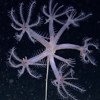
Deep sea habitats such as bottom sediments and coral reefs are important to bottom-dwelling organisms—such as plankton, forage fish, and invertebrates—that are the base of the food chain. The soft sediments and sporadic coral outcroppings at this depth are home to tube worms, bacteria, jellyfish, fish, and corals. Sperm whales are known to dive to these depths to feed on squid, skate, fish, and sharks. This environment is quite inhospitable—temperatures are near freezing, pressure is high, and there is no sunlight. Oil, drilling mud, and dispersants from the Deepwater Horizon spill were released in the vicinity of the well head, threatening these organisms.
Water-column Habitat
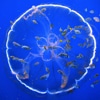
The water column serves as important habitat for many species. Plankton, jellyfish, fish, marine mammals, and many other organisms live in or use the water column to feed, migrate, seek shelter, and reproduce. Much of the oil released from the Deepwater Horizon wellhead traveled up through the water column, where some of it dissolved, impacting organisms living there. Even animals that don’t live in or on the water but depend on it for food, such as diving birds, were also injured by the contamination.
Water Surface and Sargassum Mats
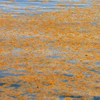
The vast surface waters of the Gulf of Mexico support a wide variety of wildlife. When oil from the Deepwater Horizon reached the water surface, emergency response workers and researchers observed oil on the surface of Gulf waters directly impacting dolphins, sperm whales, whale sharks, birds, and sea turtles. Floating oil also affected an important plant species: Sargassum, a type of brown algae that forms large floating mats in the Gulf of Mexico. These mats support marine fish, invertebrates, sea turtles, and other living things. Contamination of Sargassum mats brought many organisms into direct contact with oil.
Near Shore Habitat
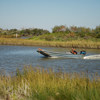
Oyster reefs, seagrass beds, beaches, tidal mud flats, mangroves, marshes and wetlands are all habitats found on or near the shoreline. At least 1,300 miles of Gulf shoreline were exposed to oil as the oil slicks from the Deepwater Horizon spill made landfall. Animals and habitats were impacted by the oil and disturbed by response and cleanup activities. Once on shore, the oil impacted aquatic organisms, which use nearshore habitats for feeding and nursery areas. The oil also posed a threat to marsh and shore birds and terrestrial wildlife.
Fish and Wildlife of the Affected Area
Fish and wildlife in the Gulf came into contact with the oil by swimming through the oil (or dispersants), ingesting it, or inhaling it at the surface. These exposures caused a variety of health impacts, including death. Below are some of the impacts of the Deepwater Horizon oil spill on fish and wildlife as compiled by the Deepwater Horizon Natural Resource Damage Assessment Trustees.5https://www.gulfspillrestoration.noaa.gov/affected-gulf-resources/
Fish and Shellfish
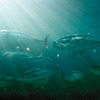
Hundreds of fish species where exposed to oil. Red snapper, bluefin tuna, and spotted seatrout are among species with known effects from the oil. Trillions of larval fish and invertebrates were killed in offshore surface, deep oceanic, and estuarine waters. These larval losses translate to millions to billions of fish that would have reached a year old. Fish suffered many negative effects from the oil, including impaired reproduction and reduced growth. There were changes to the number and type of fish species living on reefs, and to the overall food web of the reefs. Shellfish in the Gulf affected by the oil spill included oysters, scallops, and several species of shrimp and crabs. Billions of shellfish were killed by oil that reached the shoreline, as well as by river water that was released into the Gulf during the response to the spill.
Marine Mammals
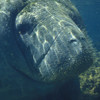
There are many kinds of mammals known to live in the Gulf of Mexico. These animals include 12 species of whales, nine types of dolphins and the Florida manatee. Under the Endangered Species Act, six of the whale species and the manatee are listed as endangered. Injuries to marine mammals included elevated death rates, reduced reproduction, and disease. Barataria Bay bottlenose dolphins were one of the most severely injured populations: the oil spill caused a 35 percent increase in death, a 46 percent increase in failed reproduction, and a 37 percent increase in adverse health effects compared with a healthy population.
Turtles

Five species of threatened/endangered sea turtles (Kemp’s ridley, green, hawksbill, leatherback, and loggerhead) are residents of the Gulf of Mexico. The most important nesting beaches in the world for Kemp’s ridley turtles are in Texas and Mexico and Gulf waters include some of the most important habitat and foraging areas for many of these turtles. Sea turtles throughout the northern Gulf of Mexico suffered adverse effects, including decreased mobility, exhaustion, dehydration, overheating, likely decreased ability to feed and evade predators, and death.
Birds

Marshes in the Gulf of Mexico provide extremely important feeding and nesting habitat for several bird species, such as shearwaters, northern gannets, frigates, royal terns, and gulls. Between 51,600 and 84,500 birds of at least 93 species died as a direct result of the spill. Species with high death estimates included brown pelicans, laughing gulls, terns, skimmers, and northern gannets.
Continuing Projects
The Council continues to restore the Gulf of Mexico to the condition it would have been in if the spill had not happened. You can visit their website to see the restoration projects in the Gulf States approved by the Deepwater Horizon Natural Resource Damage Assessment Trustees. Projects can be viewed by state using tabs on the page. Below is an example view from the website of a Trustee project currently active in Texas to increase the survival rate of sea turtles during emergency stranding events.
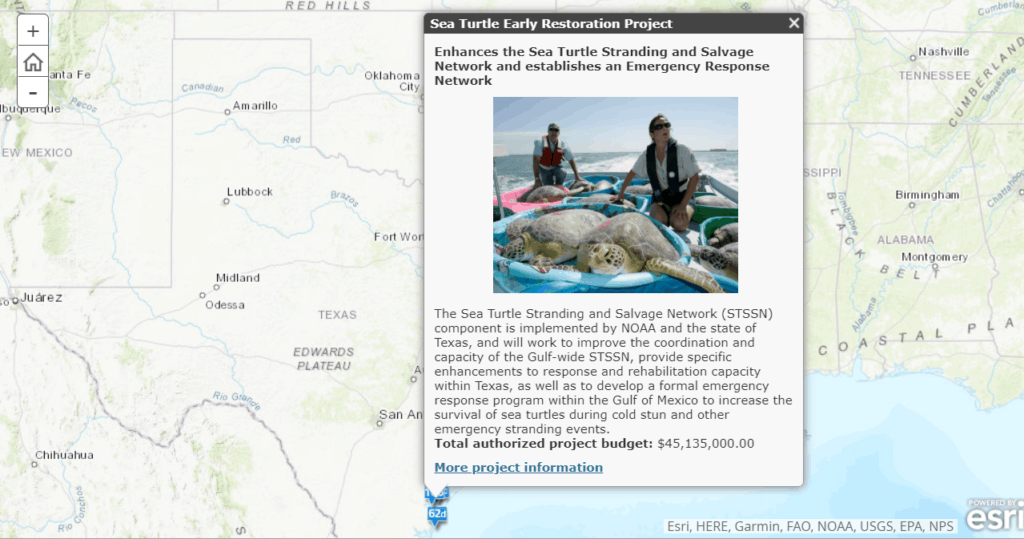
Image Credits
- Deepwater_Horizon_oil_spill_May_24_2010_with_locator-Wiki: NASA/GSFC
- deepsea-small (1): NOAA
- watercolumn-small (1): NOAA
- sargassum-small (1): NOAA
- nearshore-small: NOAA
- fish-small (1): NOAA
- marinemammal-small (1): NOAA
- turtles-small (1): NOAA
- birds-small (1): NOAA
- Trustee-restoration-projects-Texas-sea-turtle: National Oceanographic and Atmospheric Administration